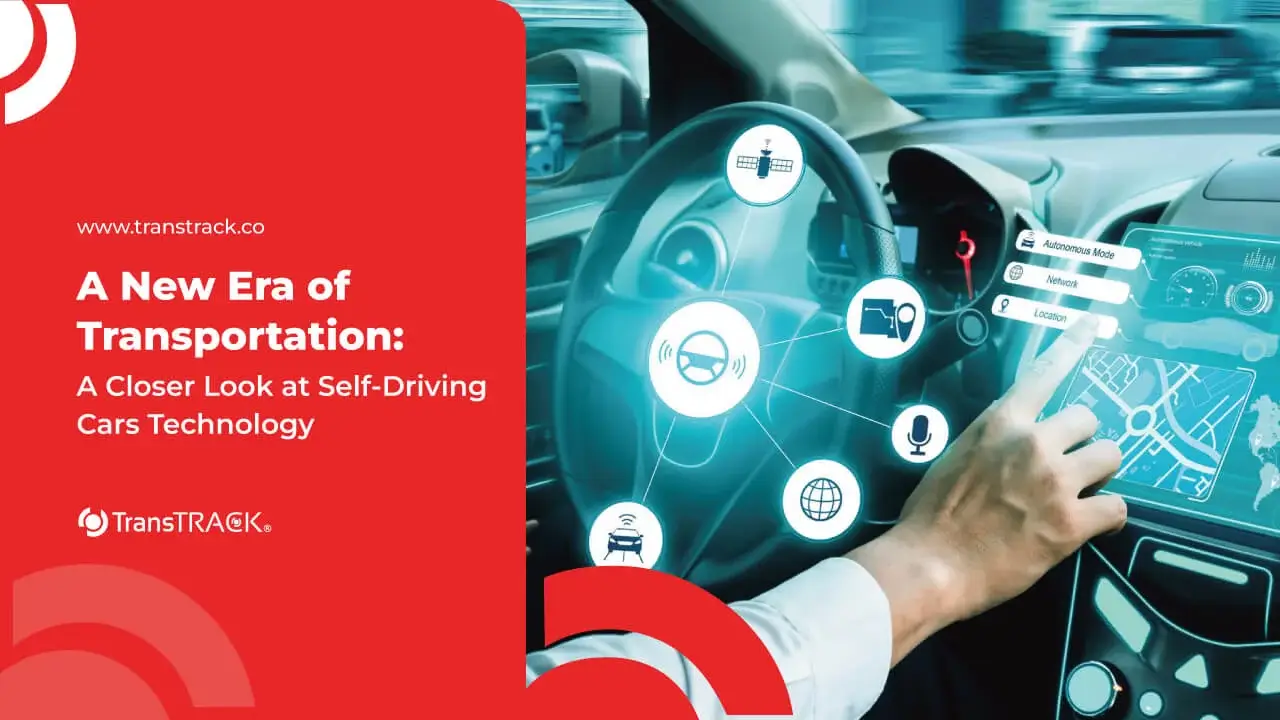A New Era of Transportation: A Closer Look at Self Driving Cars Technology
Posted on December 6, 2024 by Nur Wachda Mihmidati

Transportation technology continues to develop rapidly, changing the way humans move from one place to another. One innovation that has caught the world’s attention is self-driving cars. This technology uses artificial intelligence to control vehicles autonomously without human intervention. With the potential to improve efficiency and safety, self-driving cars are seen as the future solution to many modern transportation challenges. Check out the full discussion only on TransTRACK!
History and Development of Self Driving Cars
The concept of self-driving vehicles first emerged in the mid-20th century, but it wasn’t until the 2000s that the technology gained significant momentum. One of the key moments in history was the launch of the autonomous car project by Google in 2009. Companies like Tesla and Waymo then introduced various prototypes and advanced features, such as Autopilot and environmental recognition systems. Advances in sensor technology, such as LIDAR and advanced cameras, and machine learning algorithms have pushed self-driving cars towards commercial realization.
Technology Behind Self Driving Cars
Self-driving cars rely on a combination of advanced technologies to operate:
- Sensors and Hardware:
- LIDAR for 3D mapping of the surrounding environment.
- Cameras to detect road markings, other vehicles, and pedestrians.
- Radar to measure distance and speed of objects.
- Artificial Intelligence and Machine Learning:
- AI systems to process data from sensors.
- Machine learning algorithms to improve adaptability to new situations.
- Navigation and Decision Making System:
- Digital maps and GPS to determine the best route.
- Decision-making software to manage complex interactions on the road.
Advantages of Self Driving Cars
Self-driving cars offer a range of potential benefits:
- Safety:
- Reduces accidents due to human error such as drowsiness or drunk driving.
- Efficiency:
- Route optimization can save fuel and reduce congestion.
- Accessibility:
- Assisting individuals who are unable to drive, such as people with disabilities or the elderly.
Challenges and Obstacles
Despite their promise, self-driving cars face various challenges:
- Technical Issues:
- Sensors may struggle in bad weather conditions such as heavy rain or snow.
- Regulation:
- Lack of a clear legal framework to regulate the use of these vehicles.
- Ethics:
- Decision-making in emergency situations, such as choosing between hitting a barrier or a pedestrian.
- Public Acceptance:
- Public concerns about the safety and reliability of this technology.
Applications and Implementations
Self-driving cars have been implemented in various contexts, proving the versatility of this technology to meet modern transportation needs:
Public Transportation
Some major cities, such as Singapore and Dubai, have started adopting autonomous buses as part of their public transportation. These vehicles are capable of carrying passengers through fixed routes with high efficiency, reducing congestion and optimizing travel time.
Logistics and Shipping
Autonomous trucks are already being used to transport goods on certain routes. Companies such as TuSimple and Embark are conducting trials of autonomous trucks that can reduce operational costs and increase delivery speed. In e-commerce, small delivery robots are also being used to deliver packages to customers in urban areas.
Mobility as a Service (MaaS)
Ride-hailing platforms such as Uber and Lyft are testing autonomous vehicles for ride-sharing services. These services offer a more affordable and convenient driving experience, while reducing the need for private car ownership.
Vehicles in Closed Areas
Self-driving cars are also used in specific environments such as university campuses, airport areas, or industrial parks. In these places, autonomous vehicles help transport goods or passengers more easily within a controlled area.
Agriculture and Construction Sector
Autonomous tractors and machines are being used to improve efficiency in the agriculture and construction sectors. This technology helps reduce the need for manual labor and ensures work is done with precision.
These implementations show that self-driving cars are not just limited to personal transportation, but also have great potential in improving various industrial sectors and public services.
Economic and Social Implications
Self-driving cars have the potential to have a huge impact:
- Economic:
- Threatens jobs in the transportation sector, but creates opportunities in technology.
- Automotive Industry:
- Drive the shift from car ownership to a service-based model.
- Environment:
- Potentially reduces carbon emissions with route optimization and use of clean energy.
Case Study
One successful example is Waymo’s trial in Phoenix, Arizona. In this program, Waymo provides an autonomous taxi service that has served thousands of customers without a human driver. The program demonstrates how autonomous technology can function effectively in complex urban environments. The autonomous taxi uses a combination of LIDAR, cameras, and advanced algorithms to navigate the road, avoid other vehicles, and pick up and drop off passengers safely. The success of this program proves the potential of autonomous vehicles in replacing conventional transportation.
Conversely, Tesla incidents involving accidents while Autopilot mode was active highlight the importance of human supervision. One prominent case is an accident that occurred because the driver relied too much on the Autopilot system without monitoring the road. These events demonstrate the need for improvements in autonomous vehicle detection and response systems, as well as user education to understand the limitations of the technology.
This case study underscores the importance of developing safer technologies and the role of regulation in ensuring public safety.
Conclusion and Future
Self-driving cars hold great promise for revolutionizing transportation. While there are still challenges to overcome, technological developments and proper regulation can help realize the full potential of these autonomous vehicles. With further development, self-driving cars have the potential to change the way we live, work, and travel towards a safer and more efficient future.
As part of a smart solution for transportation management, Fleet Management System from TransTRACK can be a key enabler in integrating autonomous vehicles into your logistics and business operations. With real-time tracking, vehicle data analysis, and efficient fleet management features, TransTRACK helps you optimize your operations while preparing for the future of transportation technology. Visit TransTRACK to learn more!
Recent Post
Topic :
Recommended Articles

 Bahasa Indonesia
Bahasa Indonesia








